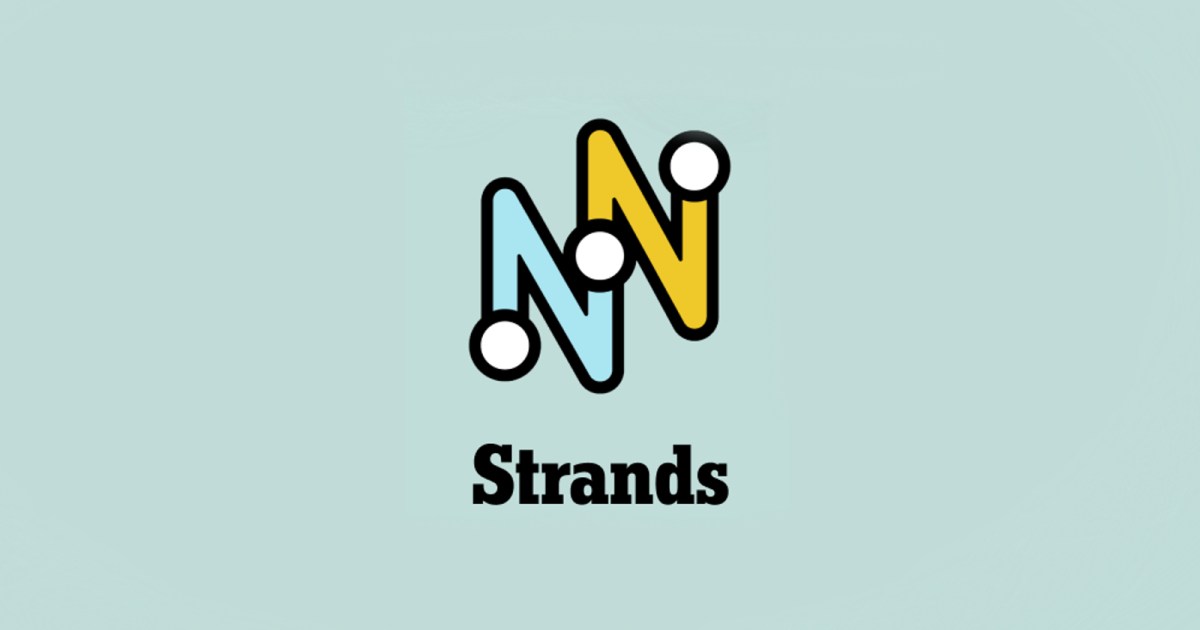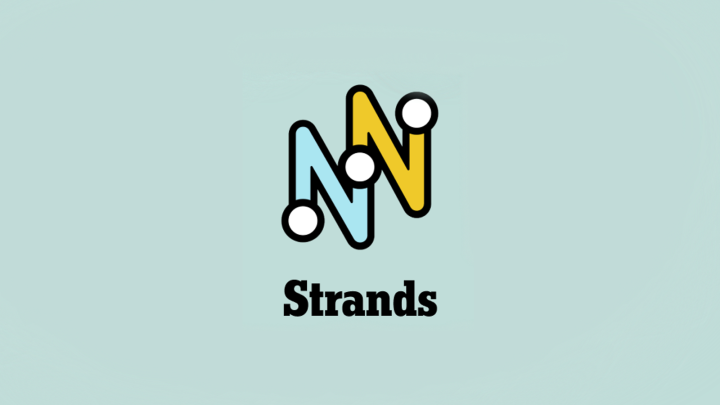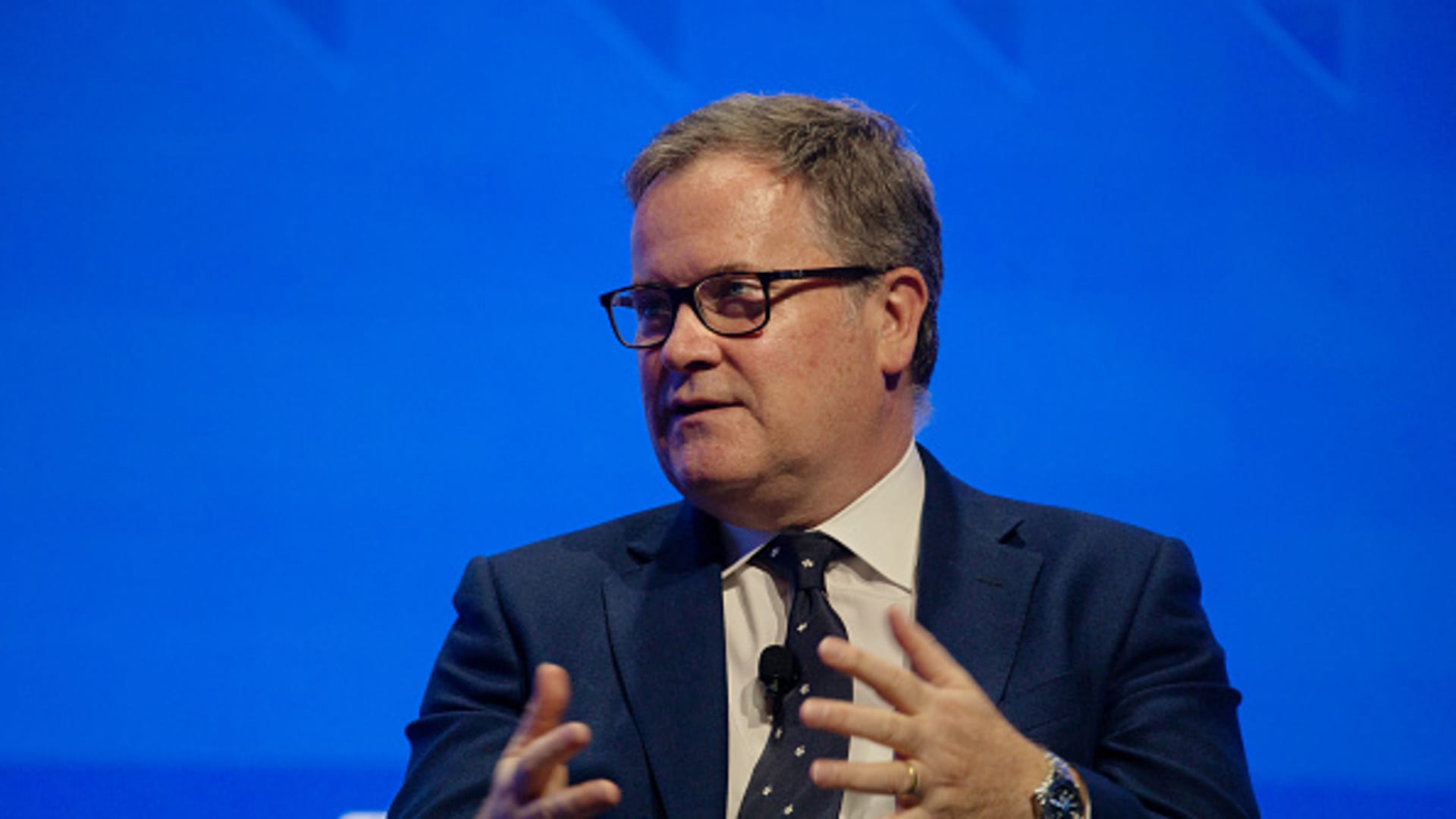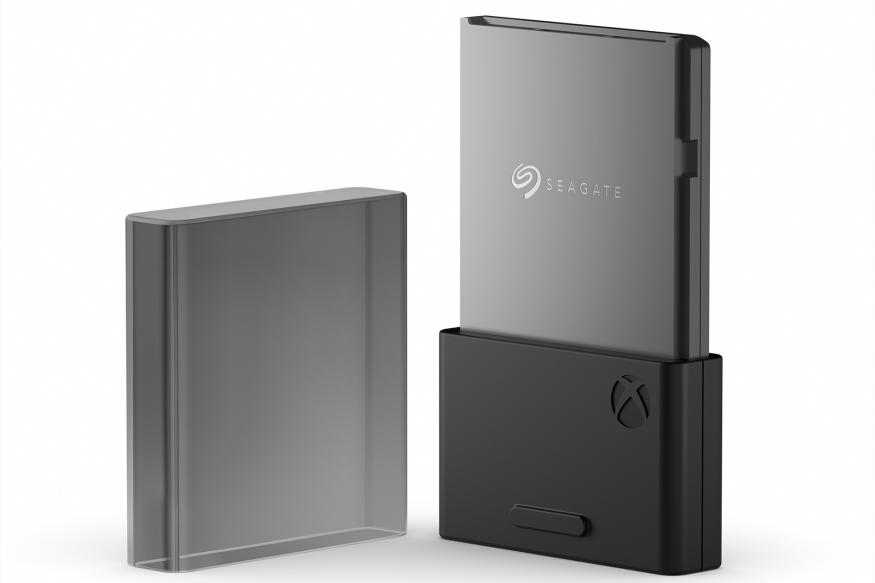Technology
Unity beats guidance with Q3 revenues of $429M, down 2%

Unity reported that its third-quarter revenues and adjusted profits beat expectations, with revenue falling 2% to $429 million.
For the quarter ended September 30, Unity‘s guidance was for revenues of $415 million to $420 million. Unity’s stock price initially went up in after-hours trading after the report came out, and then it fell again to $21.95 a share, down 1%.
The net loss for the quarter was $125 million, as compared to net loss of $125 million in the third quarter of 2023 and net loss of $126 million in the second quarter of this year. (However, as with many game companies, adjusted financials capture the company’s performance better).
On an adjusted basis, Unity reported its EBITDA (earnings before interest, taxes, depreciation and amortization) were a profit of $92 million, compared to guidance of $75 to $80 million. Adjusted
EBITDA for the total company was $94 million in the same quarter last year (excluding customer credits of $37 million as described in a shareholder letter at the end of 2023).
Third quarter Create Solutions (Unity’s game engine division) revenue from the strategic portfolio was $132 million, up 5% year-over-year, and up 2% quarter-over-quarter. The year-over-year increase was driven by a 12% growth in subscriptions revenue, as customers upgraded and renewed at increased prices.

The quarter-over-quarter increase was also driven primarily by subscription growth. Grow Solutions (Unity’s advertising division) revenue from the strategic portfolio in the third quarter was $298 million, down 5% year-over-year and up 1% quarter-over-quarter.
Revenue for the total company for the third quarter was $447 million, down 18% year-over-year driven by decreases in Grow Solutions revenue and the portfolio reset. During the third quarter, revenue from the non-strategic portfolio was $17 million, down 84% year-over-year as a result of our portfolio reset. Unity expects revenue from our non-strategic portfolio in the fourth quarter to continue to decline compared to the third quarter.
For the fourth quarter, Unity said it is guiding revenue for its strategic portfolio to $422 to $427 million. The company is guiding adjusted EBITDA to $79 to $84 million. This reflects caution on revenue recovery for the Grow business.
The canceled Runtime Fee price increase

In September, after months of listening to customers, partners, and the community, Unity rolled back one of the decisions that forced its previous CEO, John Riccitiello, to resign. Unity’s new CEO Matthew Bromberg announced the cancellation of the Runtime Fee and a reversion to the existing seat-based subscription model (and a traditional price increase) for all gaming customers. Bromberg spoke at our GamesBeat Next 2024 event in a fireside chat with me and our coverage is coming up.
“We focused on execution and discipline to drive more rapid product innovation and to restore the strong, authentic bond we have with our customers in our community. We’ve acted on those intentions over the course of the last 90 days in many different ways, and we’re feeling we impacted that positive momentum, both inside and outside the company,” Bromberg said in an analyst call.
Bromberg added, “We started off with a cancelation of the runtime fee, a reversion to a subscription based model in introducing price increases that customers could understand. And all this has unblocked our renewals pipeline and reconnected us. We thought that with delivery of Unity 6, the best performing, most stable version of Unity we’ve ever shipped, Unity 6 marks a fundamental change in how we’re going to approach the development cycle going forward.”
The company introduced pricing increases, effective January 1, 2025, which will apply to all new and existing Unity Pro and Enterprise customers upon purchase, renewal, or upgrade. Since announcing these decisions, Unity said it has seen a positive trend in renewals and an increase in early adoption of Unity 6.
The future financial impact on our Create subscription revenues will be dependent on the timing of renewals and contract negotiations with our Enterprise customers but the company believes that, over time, these pricing changes will help to drive consistent revenue growth in the double digit range for the core subscription business.
In October, the company finally launched Unity 6, the most stable and best performing version of Unity. Unity 6 is designed to enable the creation of better games, built more quickly and more efficiently than ever before.
Built, tested, and refined in production environments in partnership with developers, Unity 6 marks a shift
in how Unity will approach the development cycle moving forward. The key will be in maintaining a better and more consistent feedback loop that will ensure Unity delivers tools that make a tangible difference for customers every day.

Some of the new features in Unity 6 include end-to-end multiplayer workflows that speed development of connected games; tools that enable developers to reach even more players by targeting mobile web; and with new graphics capabilities that move workloads from the CPU to the GPU, Unity has seen CPU
computation time improvements of up to four times, dropping from from 40 milliseconds to 10 milliseconds per computation in internal stress tests.
Bringing cross-platform 3D visualization to market segments outside of gaming is a major focal point of the strategy, and remains the fastest growing segment of the subscription business. Unity is beginning to achieve global scale through partnerships with global system integrators (GSIs), distributors and value-added resellers (VARs) in every region.
New Unity customers in the quarter include Dutch airline KLM and Deutsche Bahn, the national railway company of Germany. KLM used Unity to build a VR cockpit training application. Deutsche Bahn used Unity to build guided customer experiences in AR to help passengers navigate transit changes, and
created VR environments for staff training that include a fire safety training simulator for train operators and a railway interlocking system training.
The pace of product releases in the Grow business also accelerated, highlighted by efforts to increase the scale and quality of users acquired, fine tune automated ROAS campaigns on our ad networks, and build diversity and effectiveness of ad placements.
Unity also continued to invest in the Ad Quality product, which gives publishers critical transparency into how the ads running inside their apps and games impact user engagement, and the tools to immediately shut off those that are having a negative impact. All of this work continues alongside the more fundamental data infrastructure and machine learning work being prepared for a 2025 launch.
Outlook

Unity is raising guidance for the full year due to better than expected performance in Q3, with full year revenue guidance for the strategic portfolio now at $1.703 billion to $1.708 billion compared to $1.68 billion to $1.69 billion previously. Adjusted EBITDA is expected to be $363 million to $368 million, compared to $340 million to $350 million previously.
In a statement, Bromberg said the entire gaming ecosystem functions better when Unity is delivering on its commitment to provide developers and publishers what they need to make and market great games.
“While we’re just at the beginning of our journey to transform the company, we’re energized by our progress and the response from our customers and the community,” he said. “The opportunity is clear, the market wants us to succeed, and we believe we have everything we need to deliver consistent, sustainable growth and profitability in the years ahead. As always, our deepest gratitude goes out to our customers, partners, employees, and investors for their unwavering support.”
Unity also hired Jarrod Yahes as the company’s new chief financial officer. Unity also recently hired Jim Payne as chief product officer for advertising and Alex Blum as senior vice president of corporate development. And Steve Collins, formerly of King, is the new CTO.
Asked by an analyst about Unity five years from now, Bromberg said in the call, “We are really bullish on the long term value of Unity. We think we’re in a in a really unique spot, in a really big, vibrant business. The creation of 3D content and interactive entertainment is just going to grow. We believe that we’re in an amazing spot as a tools provider to fundamentally change how the next generation of content gets created…. If they can do it more efficiently and more effectively, they’re going to make more, and they’re going to innovate more, and we’re going to get growth.”
AI’s impact
Bromberg said AI will make a difference at Unity.
“We also talked last quarter about how we’re undertaking a fundamental rebuild of our machine learning stack and data infrastructure, and using AI to enhance the return on investment we’re able to deliver to our advertising customers. We’re happy to report great progress on that work, which is already in testing on live data, and we’re really encouraged by the early results we’re seeing,” he said.
He said game monetization will not be a winner take all market. But he noted that Unity will deliver unique insight into how to maximize the lifetime value of the gaming consumer.
And Bromberg said, “Our vision for Unity is clear. We believe we have a critical role to play in helping drive the game industry forward to its next stage of growth. We’re the only company in the world capable of providing a platform to power the entire development cycle, from prototyping through life service management to user acquisition and monetization. This puts us in a position to be able to drive fundamental improvements to the economic calculus of making successful games on the production side, AI enhanced tools will speed the development process and enable greater innovation while in live operations, advertising and monetization will be able to provide insights that customers won’t be able to get anywhere else.”
On another AI question, Bromberg said, “We know that AI has a fundamental role to play with our customers in terms of making the process of building video games faster, easier and more engaging and innovative. So we are a platform and an assembly point for games and other applications. So, as and our extensibility is really our greatest strength, we feel perfectly positioned to help developers integrate these tools. Keep in mind that from our perspective, we’re agnostic as to where and how the 3D assets get created. We’re about being an assembly point providing close control the pipelines you need to build, helping your team collaborate to do that building, and then ultimately cross platform distribution through the runtime.”
He added, “The explosion of Gen AI, from our perspective, if it helps our customers, then we’re going to benefit from a seamless, integrated first party and third party AI functionality inside our editors, inside the editor, and we’re going to offer those that to customers. So we feel very good about that, and we’re not kind of fighting that at all.”
Source link
Technology
New law to ban under-16s from using social media?- The Week

Australia is planning to pass “world-leading” legislation to protect children from harmful social media use. Australian Prime Minister Anthony Albanese said the law, which will enforced later next year, will ban under-16s from using social media platforms including TikTok, Facebook, X, Instagram and likely Google’s YouTube.
“Social media is doing harm to our kids and I’m calling time on it,” Albanese said during a news conference on Thursday. Citing how excessive social media use is harming the physical and mental health of children, Albanese highlighted risks to girls in particular from harmful depictions of body image, and misogynist content aimed at boys. “If you’re a 14-year-old kid getting this stuff, at a time where you’re going through life’s changes and maturing, it can be a really difficult time and what we’re doing is listening and then acting,” Reuters quoted the PM as saying.
The island nation is currently testing age-verification systems using biometrics and government IDs to block children under 16 from accessing social media platforms. Reportedly, the legislation will not exempt underage users with parental consent or those who already have active accounts.
The prime minister said the law will tabled in the Australian Parliament later this month and it will come into effect next year, after it is ratified by all lawmakers. “The onus will be on social media platforms to demonstrate they are taking reasonable steps to prevent access. The onus won’t be on parents or young people,” PM Albanese said.
Australia’s Law Minister Michelle Rowland said the platforms affected by the new law would include Instagram, Facebook, TikTok and X. Rowland added YouTube is also likely to fall within the scope of the legislation.
Industry representative body DIGI called the move dangerous and said it would only encourage children to explore darker, unregulated parts of the internet. Sunita Bose, Managing Director of the body including Meta, TikTok, X and Alphabet’s Google as members, said, “Keeping young people safe online is a top priority…but the proposed ban for teenagers to access digital platforms is a 20th-century response to 21st-century challenges.” Bose said creating age-appropriate spaces and digital literacy was the way forward.
Technology
NYT Strands today: hints, spangram and answers for Friday, November 8

Strands is a brand new daily puzzle from the New York Times. A trickier take on the classic word search, you’ll need a keen eye to solve this puzzle.
Like Wordle, Connections, and the Mini Crossword, Strands can be a bit difficult to solve some days. There’s no shame in needing a little help from time to time. If you’re stuck and need to know the answers to today’s Strands puzzle, check out the solved puzzle below.
How to play Strands
You start every Strands puzzle with the goal of finding the “theme words” hidden in the grid of letters. Manipulate letters by dragging or tapping to craft words; double-tap the final letter to confirm. If you find the correct word, the letters will be highlighted blue and will no longer be selectable.
If you find a word that isn’t a theme word, it still helps! For every three non-theme words you find that are at least four letters long, you’ll get a hint — the letters of one of the theme words will be revealed and you’ll just have to unscramble it.
Every single letter on the grid is used to spell out the theme words and there is no overlap. Every letter will be used once, and only once.
Each puzzle contains one “spangram,” a special theme word (or words) that describe the puzzle’s theme and touches two opposite sides of the board. When you find the spangram, it will be highlighted yellow.
The goal should be to complete the puzzle quickly without using too many hints.
Hint for today’s Strands puzzle
Today’s theme is “????✌️☝️✊?”
Here’s a hint that might help you: speaking without words.
Today’s Strand answers

Today’s spanagram
We’ll start by giving you the spangram, which might help you figure out the theme and solve the rest of the puzzle on your own:
Today’s Strands answers
- SHAKE
- CLAP
- POINT
- FIST
- PEACE
- PINCH
- WAVE
- PRAY
Science & Environment
Vitol eyeing metals market as oil demand to peak in 10 years, CEO signals

Russell Hardy, chief executive officer of Vitol Services Ltd.
Bloomberg | Bloomberg | Getty Images
SINGAPORE — Vitol is eyeing the metals market with global petroleum demand expected to peak in a decade, signaled Russell Hardy, CEO of Vitol, the world’s largest independent energy trader.
“The petroleum, the oil business, we still think it will reach a peak at some point, about 10 years ahead from where we are today,” Hardy said on Thursday at the Financial Times Commodities Summit in Singapore.
In contrast to the eventual decline of the crude industry, metals business is going to witness a “great deal of growth through the electrification phase,” he added.
“So we quite like the idea of being involved in the bigger metal markets. And the three bigger metal markets are steel and iron ore, copper and aluminum,” he said.
In August, Vitol announced its acquisition of Noble Resources, a Hong Kong-based trader specializing in oil, coal and metallurgical coke, which is used to make iron. Vitol in April poached two metal traders from Mercuria, Reuters reported.
It’s a 10 year ambition, and I’m not going to put any pressure on ourselves to be in a particular place in three years, or five years.
Russell Hardy
CEO of Vitol
Energy trading giants, such as Gunvor and Mercuria, have in recent years been eyeing the metals space as they explore opportunities offered by the shift in favor of clean energy.
Critical minerals such as copper, nickel, cobalt and lithium are key in the manufacturing of EV batteries, electric vehicles, power grids and solar panels — some of the components driving the energy transition ecosystem.
Copper in particular is widely expected to see an exponential demand and a potential shortage. Existing mines and projects under construction will meet only 80% of copper needs by 2030, according to the International Energy Agency.
The process of scaling a metals business to the same size as its energy arm would be a long and difficult process, acknowledged Hardy, adding that the metals market is a competitive one and the trading house will have to find its “edge” and “pathway.”
“It’s a 10 year ambition, and I’m not going to put any pressure on ourselves to be in a particular place in three years, or five years,” he said, while emphasizing that oil and gas remain “really important” business units for the trader.
Vitol saw a slew of bumper profits in recent years on the back of Europe’s energy crisis following Russia’s invasion of Ukraine in 2022.
Technology
Google Store now selling its first third-party Pixel Watch band
The Google Store offers a plethora of accessories for Pixel products, even from third-party manufacturers. However, until now, it has yet to sell third-party bands for its smartwatches. That just changed with the inclusion of the Spigen Rugged Band for Pixel Watch devices in the Google Store. Plus, there’s a new silicone bumper designed for the Google TV Streamer.
The Spigen Rugged Band for Pixel Watch devices now available in the Google Store
The Spigen Rugged Band is available in both 41mm and 45mm sizes. While the name mentions that it’s designed for the Pixel Watch 3, the 41mm version is compatible with the Pixel Watch 2 and the original Pixel Watch. The band features a sporty design reminiscent of Casio watches. Spigen says the new band has “carbon fiber accents and a matte finish.”
The band uses a traditional “slide and lock” adjustment system based on holes and a hook. The brand claims that this ensures an ideal fit for any situation. Spigen also boasts that the band is sturdy and flexible, so it should hold up to rough use for a long time without any issues.
The new Spigen Rugged Band for Pixel Watch devices is available in a sober black color for $34.99 from the Google Store. Interestingly, it’s also available on Amazon for a lower price ($24.99). Spigen hasn’t confirmed if it will release more colors in the future.
A bumper to protect your Google TV Streamer too
Spigen also released a silicone bumper for the Google TV Streamer. The accessory will be quite useful in case of accidental drops thanks to the built-in rubber perimeter. It does not cover the top of the device, presumably to prevent any interference with wireless signals. Plus, there’s a lanyard and adhesive that will make it simple for you to mount the device behind your TV or on any vertical surface.
Unlike the band for Pixel Watch devices, the bumper is available in two colorways: hazel and porcelain. You can purchase the bumper, officially called the “Spigen Silicone Fit,” from both the Google Store and Amazon. Again, the price on the Google Store is significantly higher at $39.99 compared to Amazon’s $29.99.
Technology
Seagate’s 2TB Xbox expansion card is down to a record-low price ahead of Black Friday

While Activision has been striving to its notoriously huge Call of Duty games so they take up less storage space, you may still need more room on your console. That’s true even if you have the with 2TB of built-in storage. Games can quickly fill an internal SSD and if you’re an Xbox Series X/S gamer, Seagate’s expansion card is perhaps the way to go.
The 2TB variant is on sale at the minute. It has dropped to . That’s $160 off the regular price.
Seagate’s expansion card is one of the best options for expanding your Xbox Series X/S storage. A 2TB version has dropped to $200, its lowest price to date.
Look, proprietary storage stinks, but the choice for Series X/S owners looking for more space is largely between Seagate’s Storage Expansion Card and WD’s Black C50. It’s possible to store Series X/S games on a regular external drive, but you’ll need to move them to internal storage or an expansion card anyway to actually play them. If you don’t want to deal with shifting large files around and waiting for transfers to complete, or you don’t want to delete and download games more than is necessary, an expansion card is the way to go.
Seagate’s version is one of our picks for the . The 2TB version should give you ample space — at least until you start filling it up with all of the huge Call of Duty games that have .
Check out all of the latest Black Friday and Cyber Monday deals here.
Technology
ByteDance’s AI can make your photos act out movie scenes — but is it too real?


ByteDance’s new AI tool, X-Portrait 2, transforms still photos into realistic video animations of famous movie scenes with uncanny detail, raising questions about the future of AI-driven animation and digital content creation.Read More
-

 Science & Environment2 months ago
Science & Environment2 months agoHow to unsnarl a tangle of threads, according to physics
-

 Technology1 month ago
Technology1 month agoIs sharing your smartphone PIN part of a healthy relationship?
-

 Science & Environment2 months ago
Science & Environment2 months agoHyperelastic gel is one of the stretchiest materials known to science
-

 Science & Environment2 months ago
Science & Environment2 months ago‘Running of the bulls’ festival crowds move like charged particles
-

 Technology2 months ago
Technology2 months agoWould-be reality TV contestants ‘not looking real’
-

 Science & Environment1 month ago
Science & Environment1 month agoX-rays reveal half-billion-year-old insect ancestor
-

 Sport1 month ago
Sport1 month agoAaron Ramsdale: Southampton goalkeeper left Arsenal for more game time
-

 MMA1 month ago
MMA1 month ago‘Dirt decision’: Conor McGregor, pros react to Jose Aldo’s razor-thin loss at UFC 307
-

 Money1 month ago
Money1 month agoWetherspoons issues update on closures – see the full list of five still at risk and 26 gone for good
-

 Science & Environment2 months ago
Science & Environment2 months agoPhysicists have worked out how to melt any material
-

 Science & Environment2 months ago
Science & Environment2 months agoMaxwell’s demon charges quantum batteries inside of a quantum computer
-

 Science & Environment2 months ago
Science & Environment2 months agoSunlight-trapping device can generate temperatures over 1000°C
-

 Football1 month ago
Football1 month agoRangers & Celtic ready for first SWPL derby showdown
-

 Science & Environment2 months ago
Science & Environment2 months agoLaser helps turn an electron into a coil of mass and charge
-

 News1 month ago
News1 month agoWoman who died of cancer ‘was misdiagnosed on phone call with GP’
-

 Technology1 month ago
Technology1 month agoUkraine is using AI to manage the removal of Russian landmines
-
Business1 month ago
how UniCredit built its Commerzbank stake
-

 Technology1 month ago
Technology1 month agoGmail gets redesigned summary cards with more data & features
-

 News1 month ago
News1 month ago‘Blacks for Trump’ and Pennsylvania progressives play for undecided voters
-

 Science & Environment2 months ago
Science & Environment2 months agoA new kind of experiment at the Large Hadron Collider could unravel quantum reality
-

 Science & Environment2 months ago
Science & Environment2 months agoLiquid crystals could improve quantum communication devices
-

 Technology1 month ago
Technology1 month agoSamsung Passkeys will work with Samsung’s smart home devices
-

 Sport1 month ago
Sport1 month agoBoxing: World champion Nick Ball set for Liverpool homecoming against Ronny Rios
-

 Technology1 month ago
Technology1 month agoEpic Games CEO Tim Sweeney renews blast at ‘gatekeeper’ platform owners
-

 Science & Environment2 months ago
Science & Environment2 months agoWhy this is a golden age for life to thrive across the universe
-

 Technology1 month ago
Technology1 month agoRussia is building ground-based kamikaze robots out of old hoverboards
-

 Science & Environment2 months ago
Science & Environment2 months agoQuantum ‘supersolid’ matter stirred using magnets
-

 Sport1 month ago
Sport1 month ago2024 ICC Women’s T20 World Cup: Pakistan beat Sri Lanka
-

 Entertainment1 month ago
Entertainment1 month agoBruce Springsteen endorses Harris, calls Trump “most dangerous candidate for president in my lifetime”
-

 MMA1 month ago
MMA1 month agoDana White’s Contender Series 74 recap, analysis, winner grades
-

 News1 month ago
News1 month agoNavigating the News Void: Opportunities for Revitalization
-

 News1 month ago
News1 month agoMassive blasts in Beirut after renewed Israeli air strikes
-

 Technology1 month ago
Technology1 month agoMicrosoft just dropped Drasi, and it could change how we handle big data
-

 MMA1 month ago
MMA1 month agoPereira vs. Rountree prediction: Champ chases legend status
-

 MMA1 month ago
MMA1 month ago‘Uncrowned queen’ Kayla Harrison tastes blood, wants UFC title run
-

 Technology1 month ago
Technology1 month agoMicrophone made of atom-thick graphene could be used in smartphones
-

 Technology1 month ago
Technology1 month agoCheck, Remote, and Gusto discuss the future of work at Disrupt 2024
-

 News1 month ago
News1 month agoRwanda restricts funeral sizes following outbreak
-
Business1 month ago
Top shale boss says US ‘unusually vulnerable’ to Middle East oil shock
-

 Technology1 month ago
Technology1 month agoSingleStore’s BryteFlow acquisition targets data integration
-

 Sport1 month ago
Sport1 month agoWXV1: Canada 21-8 Ireland – Hosts make it two wins from two
-

 TV1 month ago
TV1 month agoসারাদেশে দিনব্যাপী বৃষ্টির পূর্বাভাস; সমুদ্রবন্দরে ৩ নম্বর সংকেত | Weather Today | Jamuna TV
-

 Business1 month ago
Business1 month agoWater companies ‘failing to address customers’ concerns’
-

 Science & Environment2 months ago
Science & Environment2 months agoQuantum forces used to automatically assemble tiny device
-

 Technology1 month ago
Technology1 month agoWhy Machines Learn: A clever primer makes sense of what makes AI possible
-

 News2 months ago
News2 months ago▶️ Hamas in the West Bank: Rising Support and Deadly Attacks You Might Not Know About
-

 News1 month ago
News1 month agoCornell is about to deport a student over Palestine activism
-

 Business1 month ago
Business1 month agoWhen to tip and when not to tip
-

 MMA1 month ago
MMA1 month agoKayla Harrison gets involved in nasty war of words with Julianna Pena and Ketlen Vieira
-

 News1 month ago
News1 month agoHull KR 10-8 Warrington Wolves – Robins reach first Super League Grand Final
-

 Technology2 months ago
Technology2 months agoMeta has a major opportunity to win the AI hardware race
-

 Science & Environment2 months ago
Science & Environment2 months agoITER: Is the world’s biggest fusion experiment dead after new delay to 2035?
-

 Science & Environment2 months ago
Science & Environment2 months agoA slight curve helps rocks make the biggest splash
-

 Science & Environment2 months ago
Science & Environment2 months agoNuclear fusion experiment overcomes two key operating hurdles
-
Travel1 month ago
World of Hyatt welcomes iconic lifestyle brand in latest partnership
-

 Football1 month ago
Football1 month ago'Rangers outclassed and outplayed as Hearts stop rot'
-

 MMA1 month ago
MMA1 month agoPennington vs. Peña pick: Can ex-champ recapture title?
-

 Technology1 month ago
Technology1 month agoLG C4 OLED smart TVs hit record-low prices ahead of Prime Day
-

 News1 month ago
News1 month ago▶ Hamas Spent $1B on Tunnels Instead of Investing in a Future for Gaza’s People
-

 Sport1 month ago
Sport1 month agoShanghai Masters: Jannik Sinner and Carlos Alcaraz win openers
-

 Technology1 month ago
Technology1 month agoUniversity examiners fail to spot ChatGPT answers in real-world test
-

 Sport1 month ago
Sport1 month agoChina Open: Carlos Alcaraz recovers to beat Jannik Sinner in dramatic final
-

 Football1 month ago
Football1 month agoWhy does Prince William support Aston Villa?
-

 Sport1 month ago
Sport1 month agoPremiership Women’s Rugby: Exeter Chiefs boss unhappy with WXV clash
-

 Money1 month ago
Money1 month agoTiny clue on edge of £1 coin that makes it worth 2500 times its face value – do you have one lurking in your change?
-

 Technology1 month ago
Technology1 month agoMusk faces SEC questions over X takeover
-

 Sport1 month ago
Sport1 month agoSturm Graz: How Austrians ended Red Bull’s title dominance
-

 Sport1 month ago
Sport1 month agoCoco Gauff stages superb comeback to reach China Open final
-

 Science & Environment2 months ago
Science & Environment2 months agoNerve fibres in the brain could generate quantum entanglement
-

 Womens Workouts2 months ago
Womens Workouts2 months ago3 Day Full Body Women’s Dumbbell Only Workout
-
Business1 month ago
Bank of England warns of ‘future stress’ from hedge fund bets against US Treasuries
-

 Technology1 month ago
Technology1 month agoQuoroom acquires Investory to scale up its capital-raising platform for startups
-
Business1 month ago
Italy seeks to raise more windfall taxes from companies
-

 MMA1 month ago
MMA1 month ago‘I was fighting on automatic pilot’ at UFC 306
-

 MMA1 month ago
MMA1 month agoHow to watch Salt Lake City title fights, lineup, odds, more
-

 TV1 month ago
TV1 month agoTV Patrol Express September 26, 2024
-

 News1 month ago
News1 month agoGerman Car Company Declares Bankruptcy – 200 Employees Lose Their Jobs
-

 Sport1 month ago
Sport1 month agoURC: Munster 23-0 Ospreys – hosts enjoy second win of season
-

 Sport1 month ago
Sport1 month agoWales fall to second loss of WXV against Italy
-

 Science & Environment2 months ago
Science & Environment2 months agoTime travel sci-fi novel is a rip-roaringly good thought experiment
-

 News2 months ago
News2 months ago▶️ Media Bias: How They Spin Attack on Hezbollah and Ignore the Reality
-

 Science & Environment2 months ago
Science & Environment2 months agoHow to wrap your mind around the real multiverse
-
Business1 month ago
DoJ accuses Donald Trump of ‘private criminal effort’ to overturn 2020 election
-

 Technology1 month ago
Technology1 month agoAmazon’s Ring just doubled the price of its alarm monitoring service for grandfathered customers
-
Business1 month ago
Sterling slides after Bailey says BoE could be ‘a bit more aggressive’ on rates
-
Business1 month ago
‘Let’s be more normal’ — and rival Tory strategies
-

 Technology1 month ago
Technology1 month agoThe best shows on Max (formerly HBO Max) right now
-

 Sport1 month ago
Sport1 month agoNew Zealand v England in WXV: Black Ferns not ‘invincible’ before game
-

 Technology1 month ago
Technology1 month agoJ.B. Hunt and UP.Labs launch venture lab to build logistics startups
-

 Football1 month ago
Football1 month agoFifa to investigate alleged rule breaches by Israel Football Association
-

 News1 month ago
News1 month agoHarry vs Sun publisher: ‘Two obdurate but well-resourced armies’
-
Business1 month ago
The search for Japan’s ‘lost’ art
-

 MMA1 month ago
MMA1 month agoKetlen Vieira vs. Kayla Harrison pick, start time, odds: UFC 307
-

 Technology1 month ago
Technology1 month agoIf you’ve ever considered smart glasses, this Amazon deal is for you
-

 MMA1 month ago
MMA1 month agoKevin Holland suffers injury vs. Roman Dolidze
-

 Technology4 weeks ago
Technology4 weeks agoNintendo’s latest hardware is not the Switch 2
-

 MMA1 month ago
MMA1 month agoUFC 307’s Ketlen Vieira says Kayla Harrison ‘has not proven herself’
-

 News1 month ago
News1 month agoTrump returns to Pennsylvania for rally at site of assassination attempt
-

 Sport1 month ago
Sport1 month agoSnooker star Shaun Murphy now hits out at Kyren Wilson after war of words with Mark Allen
-

 Sport1 month ago
Sport1 month agoMan City ask for Premier League season to be DELAYED as Pep Guardiola escalates fixture pile-up row


You must be logged in to post a comment Login